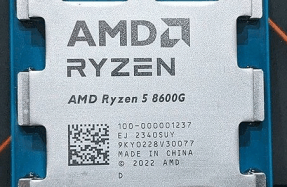MAINFRAME MAGE

John Mertic is director of program management for the Linux Foundation’s Open Mainframe Project (www. openmainframeproject.org), an effort to bring open source knowledge, and of course Linux, to mainframe computing.
Hip youngsters today may not be aware that every bank transaction and every flight booking all end up being processed on mainframe machines. But it is fact. Also, despite processing all this valuable data and often having hundreds of CPUs and thousands of gigabytes of memory, no one (that we know of) has ever hacked a mainframe. Thanks to Zowe, one of the Open Mainframe Project’s key efforts, a green-screen 3270 terminal is no longer the only way to access mainframe data. You can use SSH, cloudy REST APIs or even a JavaScript-powered desktop. And you don’t need to know COBOL either, but it probably helps. There’s a lot of momentum towards training the new generation of mainframers, and the Open Mainframe Project is pivotal to that.
We last met John in LXF252 in bonny Scotland. This time around we were at the Open Source Summit in Lyon, back in September 2019. Do check out the project’s page because a lot has happened since then. Besides being the Linux Foundation’s main mainframer, John is also director for its Academy Software Foundation and ODPi (a non-profit dedicated to taming the big data, and in particular Hadoop, ecosystem) projects.

WHY WOULD YOU WANT A MAINFRAME?
“Transportation, insurance, industry… really anywhere where you need computing that’s extremely transactionable, highly scalable, top-end performance and immensely secure.”
Linux Format: Can you give our readers a quick summary of what the Open Mainframe project is all about?
The Open Mainframe Project is now four years old, and it’s designed to be the focal point of open source in the mainframe computing environment. The mainframe has been around for decades – y’know, 50 or 60 years now – and the computing architecture founded by IBM is pervasive across the Fortune 500. So transportation,
You’re reading a preview, subscribe to read more.
Start your free 30 days





